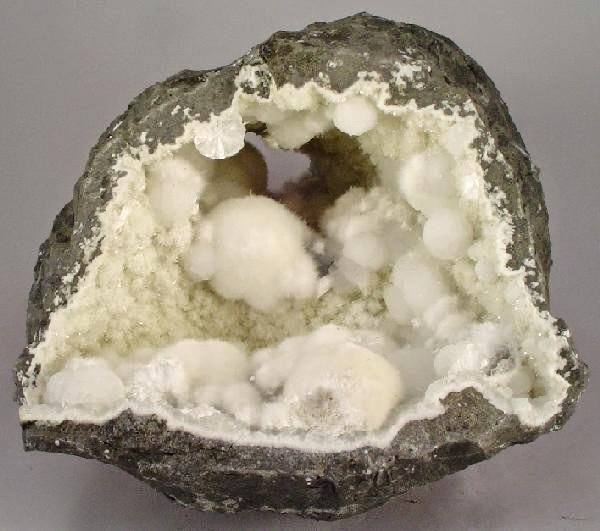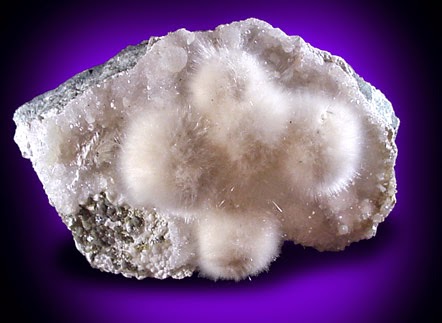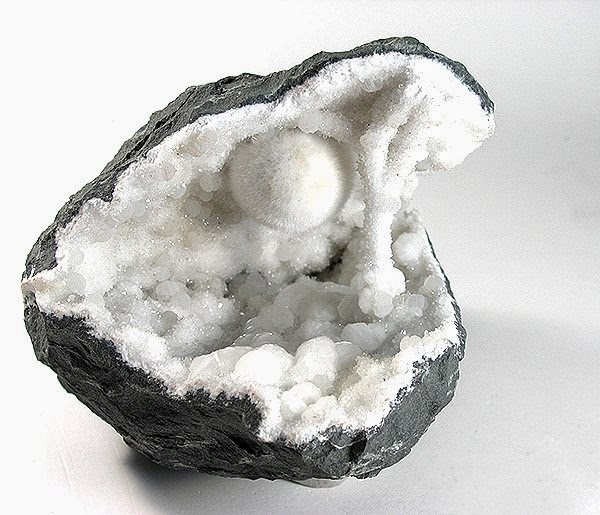
Chemical Formula: CaSi2O5·2H2O
Locality: Disko Island, Greenland. Poona, near Bombay, India.
Name Origin: Named for Lorenz Oken (1779-1851), German natural historian, Munich Germany.
Okenite (CaSi2O5·2H2O) is a silicate mineral that is usually associated with zeolites. It most commonly is found as small white “cotton ball” formations within basalt geodes. These formations are clusters of straight, radiating, fibrous crystals that are both bendable and fragile.
Discovery and occurrence
It was first described in 1828 for an occurrence at Disko Island, Greenland and named for German naturalist Lorenz Oken (1779–1851).
Minerals associated with okenite include apophyllite, gyrolite, prehnite, chalcedony, goosecreekite and many of the other zeolites. Okenite is found in India, mainly within the state of Maharashtra. Other localities include Bulla Island, Azerbaijan; Aranga, New Zealand; Chile; Ireland and Bordo Island in the Faroe Islands.
History
Discovery date: 1828
Town of Origin : ILE DISKO
Country of Origin: GROENLAND
Physical Properties
Cleavage: {001} Good
Color: White, Yellowish white, Bluish white.
Density: 2.3 – 2.33, Average = 2.31
Diaphaneity:Transparent to Translucent
Fracture: Conchoidal – Fractures developed in brittle materials characterized by smoothly curving surfaces, (e.g. quartz).
Hardness: 5 – Apatite
Luminescence: Non-Fluorescent.
Luster: Pearly
Streak: white
Photos:












